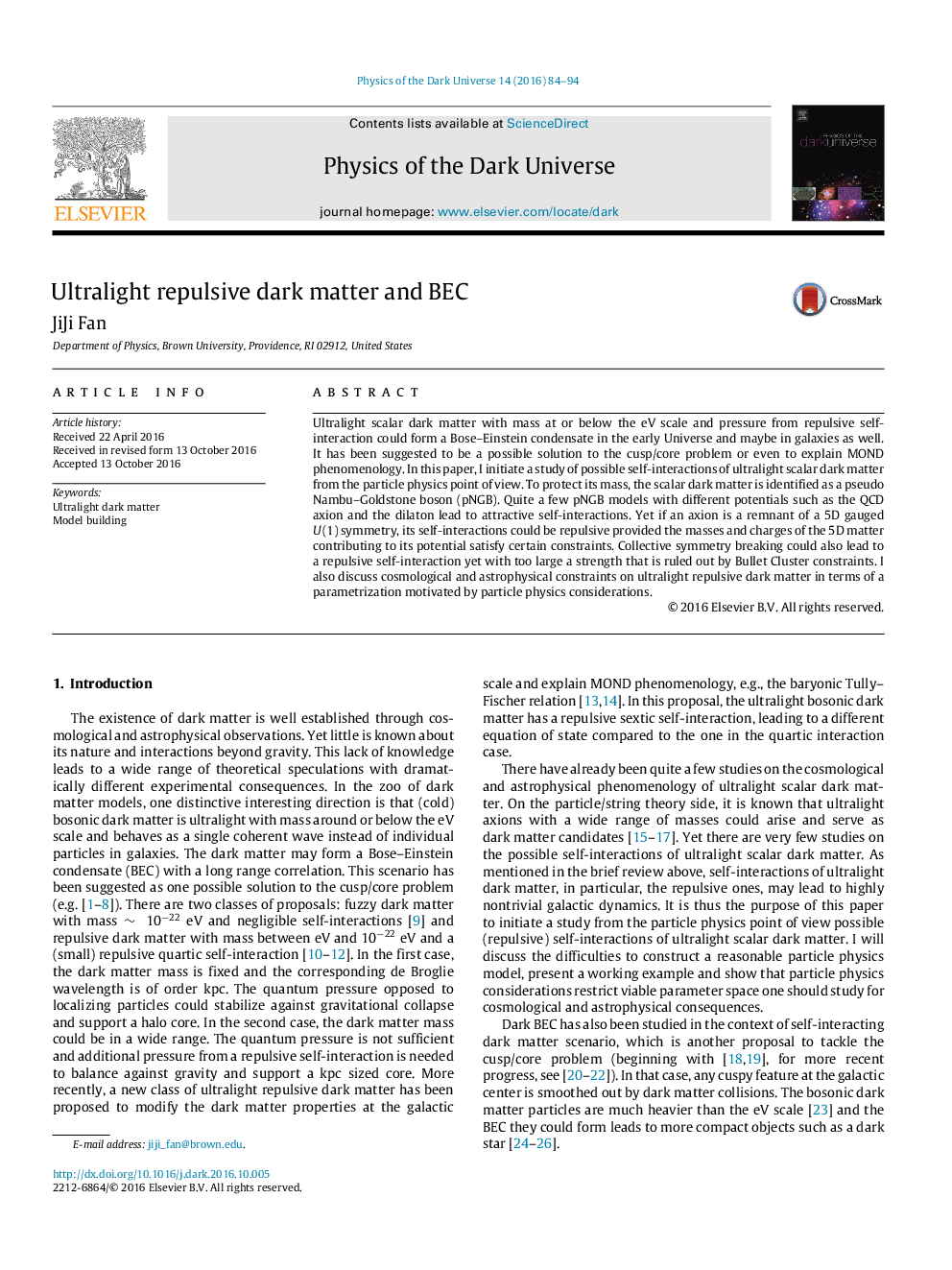| Article ID | Journal | Published Year | Pages | File Type |
|---|---|---|---|---|
| 8141903 | Physics of the Dark Universe | 2016 | 11 Pages |
Abstract
Ultralight scalar dark matter with mass at or below the eV scale and pressure from repulsive self-interaction could form a Bose-Einstein condensate in the early Universe and maybe in galaxies as well. It has been suggested to be a possible solution to the cusp/core problem or even to explain MOND phenomenology. In this paper, I initiate a study of possible self-interactions of ultralight scalar dark matter from the particle physics point of view. To protect its mass, the scalar dark matter is identified as a pseudo Nambu-Goldstone boson (pNGB). Quite a few pNGB models with different potentials such as the QCD axion and the dilaton lead to attractive self-interactions. Yet if an axion is a remnant of a 5D gauged U(1) symmetry, its self-interactions could be repulsive provided the masses and charges of the 5D matter contributing to its potential satisfy certain constraints. Collective symmetry breaking could also lead to a repulsive self-interaction yet with too large a strength that is ruled out by Bullet Cluster constraints. I also discuss cosmological and astrophysical constraints on ultralight repulsive dark matter in terms of a parametrization motivated by particle physics considerations.
Keywords
Related Topics
Physical Sciences and Engineering
Physics and Astronomy
Astronomy and Astrophysics
Authors
JiJi Fan,
